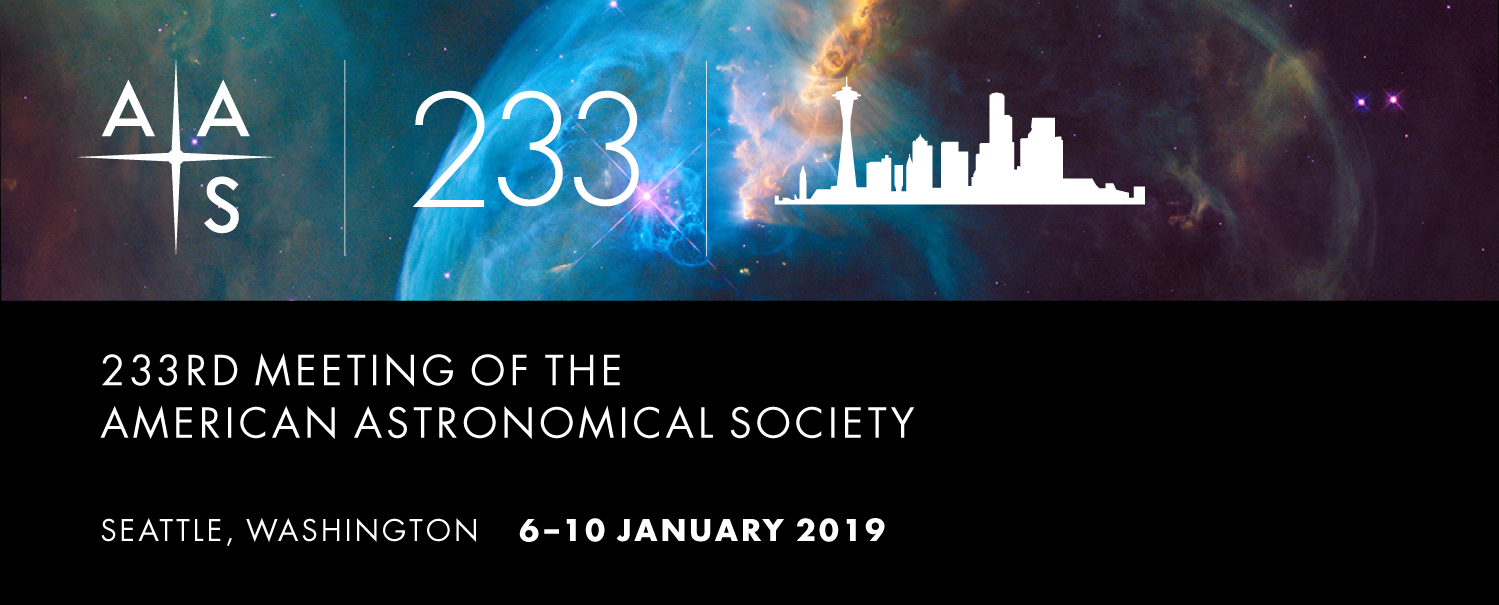Happy holidays and best wishes for the New Year from LSST! The next LSST News Digest will be distributed on January 15th, 2019.
LSST will have representation at the 233rd AAS Meeting in Seattle, WA, January 7-10. If you’ll be attending the meeting and would like to help staff the LSST exhibitor booth (#113), or our Job Fair table (January 8, Noon-6:30 pm), please email us at communications-team@lists.lsst.org. We also encourage you to attend the LSST Town Hall on January 9th at 7:30 pm in room 6C.
The latest LSST “Day in the Life” video is now available in the LSST Gallery, the fourth in a series that highlights the diversity of efforts undertaken by our distributed team. Thanks to everyone who contributed photos—keep up the good work.
An update from the PLAsTiCC Astronomical Classification Challenge: The final submission deadline for the main Kaggle prize has passed; however, even if participants aren’t in the top tier, they can still enter the scientific part of the competition until January 15th. The PLAsTiCC team will select winners of scientifically novel algorithms, or those that perform well in specific areas. Prizes for this part of the challenge include presenting your approach at a scientific meeting.
On December 7th, the vessel carrying the 3.5-meter LSST Secondary Mirror (M2) arrived at the Port of Coquimbo in Chile, and M2 was safely offloaded. The smaller cargo boxes were secured on transport vehicles and taken to the summit the next day. M2 arrived on the summit on December 12th. Photos of the transport and arrival are available in the LSST Gallery.
It is with great regret that we report the sudden passing of Jim Parsons, one of our NCSA colleagues. Our thoughts are with his family and our team at NCSA. There is a Data Management (DM) community post (https://community.lsst.org/c/dm) that is being updated with information and arrangements as they are available; the thread also offers a forum to express sentiments that will be forwarded to Jim’s family.
Project members please note: LSST IT department has retired the aging server, listserv.lsstcorp.org. As a result, the mailing lists found at this link have either been moved here (if known to be active), or archived here. Active lists will forward to the new location for one month. If you experience issues or have questions about a lsstcorp mailing list, please email IT.
CORPORATION NEWS
The LSST Corporation 2019 Enabling Science Call for Proposals is now open! Information on the call may be found at this link. Proposals are due no later than midnight on Sunday, January 6, 2019. Please see the call and the associated template for proposal submission information and guidelines. We look forward to receiving your proposals in response to this call.
The LSSTC Data Science Fellowship Program (LSSTC DSFP) is looking for host institutions for future sessions. The LSST DSFP is a two-year training program, designed to teach students in astronomy-related fields (e.g. astrophysics, cosmology, planetary science, etc.) essential skills for dealing with big data from LSST. The application to host a session is available at this link.
PERSONNEL NEWS
Andrés Plazas Malagón joined the Data Management subsystem as a Software Scientist on November 1st. Based in Princeton, Andrés will work on the Data Management code which will be used for performing Instrument Signature Removal (ISR) during pipeline processing of LSST data. He will work closely with the Camera Team to understand the characteristics and performance of the LSST detectors.
Rémy Joseph also joined the Data Management subsystem on December 1st as a Postdoctoral Research Associate. Rémy will work in Princeton as a member of LSST's Data Release Production team to define and develop methods for deblending galaxies and stars which can make use of multi-band and multi-resolution imaging data.
UPCOMING MEETINGS with LSST INVOLVEMENT
(those with asterisk* are LSSTC funded):
2018 | |
December 17-21 | South American Workshop on Cosmology in the LSST Era, Sao Paulo, Brazil |
2019 | |
January 6-10 | AAS 233rd Meeting, Seattle, WA |
January 16-17 | AMCL Meeting, Tucson, AZ |
January 22-23 | Scientific Advisory Committee (SAC) Meeting, Princeton, NJ |
Feb 26 - Mar 1 | Dark Energy Science Collaboration (DESC) Collaboration Meeting and Hack Day.* |
May 20-23 | LSST@Asia, Sydney, Australia* |
NOTICIAS DEL PROYECTO & CIENTIFICAS
¡Felices fiestas y los mejores deseos para el Año Nuevo de LSST! Las próximas Noticias de LSST se distribuirán el 15 de enero, 2019.
LSST tendrá representación en la Reunión AAS 233 en Seattle, Washington, el 7-10 de enero. Si asistirá a la reunión y le gustaría ayudar a en el stand expositor de LSST (#113), o nuestra mesa de la Feria del Trabajo (8 de enero, del Mediodía-6:30 p.m.), por favor envíenos un correo electrónico a communications-team@lists.lsst.org. También le animamos a asistir al Town Hall de LSST el 9 de enero a las 19:30 en la habitación 6C.
EL último video de “Un Día en la Vida” de LSST está disponible ahora en la Galería de LSST LSST Gallery, el cuarto en una serie que destaca la diversidad de esfuerzos emprendidos por nuestro distribuido equipo. Gracias a cada uno que contribuyó fotos — mantengan el buen trabajo.
Una actualización del Desafío de Clasificación Astronómica PLAsTiCC: PLAsTiCC Astronomical Classification Challenge: La fecha límite de entrega final para el premio principal de Kaggle ha pasado; sin embargo, si los participantes no están en el nivel superior, todavía pueden entrar en la parte científica del concurso hasta el 15 de enero. El equipo de PLAsTiCC seleccionará a ganadores de algoritmos científicamente nuevos o aquellos que funcionan bien en áreas específicas. Los premios de esta parte del desafío incluyen la presentación de su enfoque en una reunión científica.
El 7 de diciembre, el buque que llevaba el Espejo Secundario (M2) de 3,5 metros de LSST, llegó al Puerto de Coquimbo en Chile y el M2 fue descargado con seguridad. Las cajas de carga más pequeñas se aseguraron a vehículos de transporte y se llevaron a la cumbre al día siguiente. El M2 llegó a la cumbre el 12 de diciembre. Las fotos del transporte y llegada están disponibles en la Galería de LSST LSST Gallery.
Es con gran pena que informamos del repentino fallecimiento de Jim Parsons, uno de nuestros colegas de NCSA. Nuestros pensamientos están con su familia y nuestro equipo en NCSA. Hay una publicación de la comunidad de Gestión de Datos (DM) (https://community.lsst.org/c/dm) que está siendo actualizado con información y arreglos a medida que estén disponibles; también ofrece un foro para expresar sentimientos que se reenviarán a la familia Jim.
Miembros del proyecto por favor tomen nota: el departamento de la IT de LSST ha retirado el servidor, listserv.lsstcorp.org. Como consiguiente, las listas de direcciones encontradas en este enlace link se han o movido acá here (si están activos), o archivado aquí here. Las listas activas se enviarán a la nueva ubicación durante un mes. Si experimentan problemas o tiene preguntas sobre una lista de direcciones de lsstcorp, por favor enviar un correo electrónico a IT email IT.
NOTICIAS DE LA CORPORACIÓN
¡La Llamada de Propuestas de Enabling Science 2019 de la Corporación LSST está abierta! La información sobre la llamada se puede encontrar en esta enlace link. Las propuestas se recibirán no más tarde que la medianoche el domingo, 6 de enero, 2019. Por favor ver la llamada call y la plantilla template asociada para más información de la propuesta y pautas. Esperamos con ansias recibir sus propuestas en respuesta a esta llamada.
El Programa LSSTC Data Science Fellowship (LSSTC DSFP) busca instituciones anfitrionas para futuras sesiones. El LSST DSFP es un programa de capacitación de dos años, diseñado para enseñar a estudiantes en campos relacionados con la astronomía (p.ej. astrofísica, cosmología, ciencia planetaria, etc.) habilidades esenciales para tratar con datos grandes de LSST. La aplicación para organizar una sesión está disponible en este enlace link.
NOTICIAS DEL PERSONAL
Andrés Plazas Malagón se unió al subsistema de Gestión de Satos como un Científico de Software el 1 de noviembre. Con sede en Princeton, Andrés trabajará en el código de Gestión de Datos que se usará para realizar Instrument Signature Removal (ISR) durante el procesamiento del ducto de datos de LSST. Trabajará estrechamente con el Equipo de la Cámara para entender las características y el funcionamiento de los detectores de LSST.
Rémy Joseph también se unió al subsistema de Gestión de Datos el 1 de diciembre como Socio de Investigación Post Doctoral. Rémy trabajará en Princeton como miembro del equipo de Producción de Liberación de Datos de LSST para definir y desarrollar métodos para aislar señales de galaxias y estrellas que se superponen las cuales pueden hacer uso de los datos de imagen de multi banda y multi resolución.
PRÓXIMAS REUNIONES CON LA PARTICIPACIÓN DE LSST
(aquellas con asterisco* son financiadas por LSSTC):
2018 | |
Diciembre 17-21 | South American Workshop on Cosmology in the LSST Era, Sao Paulo, Brazil |
2019 | |
Enero 6-10 | AAS 233rd Meeting, Seattle, WA |
Enero 16-17 | AMCL Meeting, Tucson, AZ |
Enero 22-23 | Scientific Advisory Committee (SAC) Meeting, Princeton, NJ |
Feb 26 - Mar 1 | Dark Energy Science Collaboration (DESC) Collaboration Meeting and Hack Day.* |
Mayo 20-23 | LSST@Asia, Sydney, Australia* |


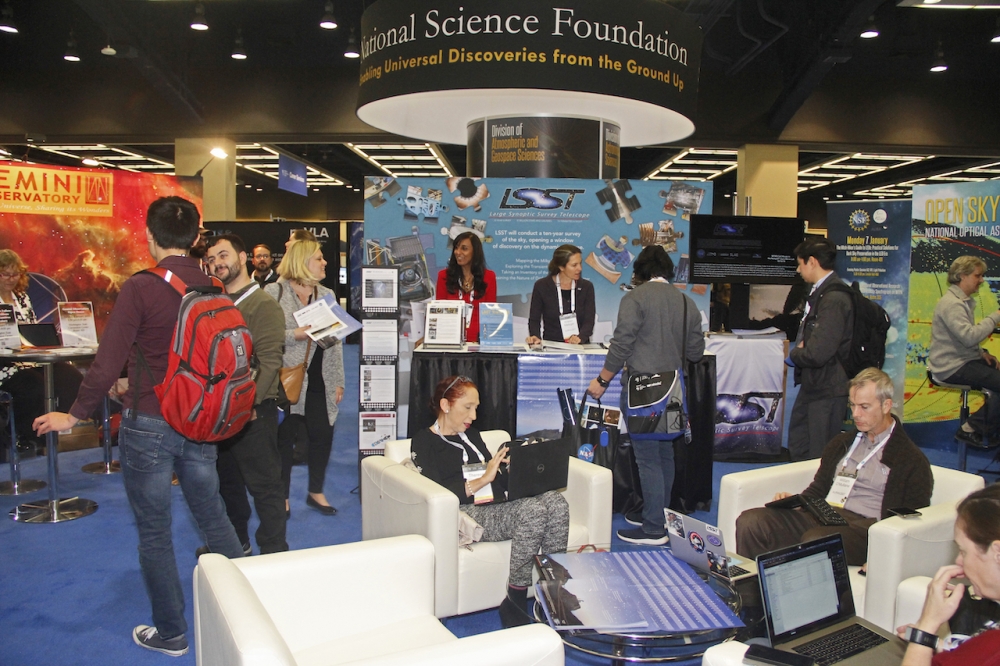
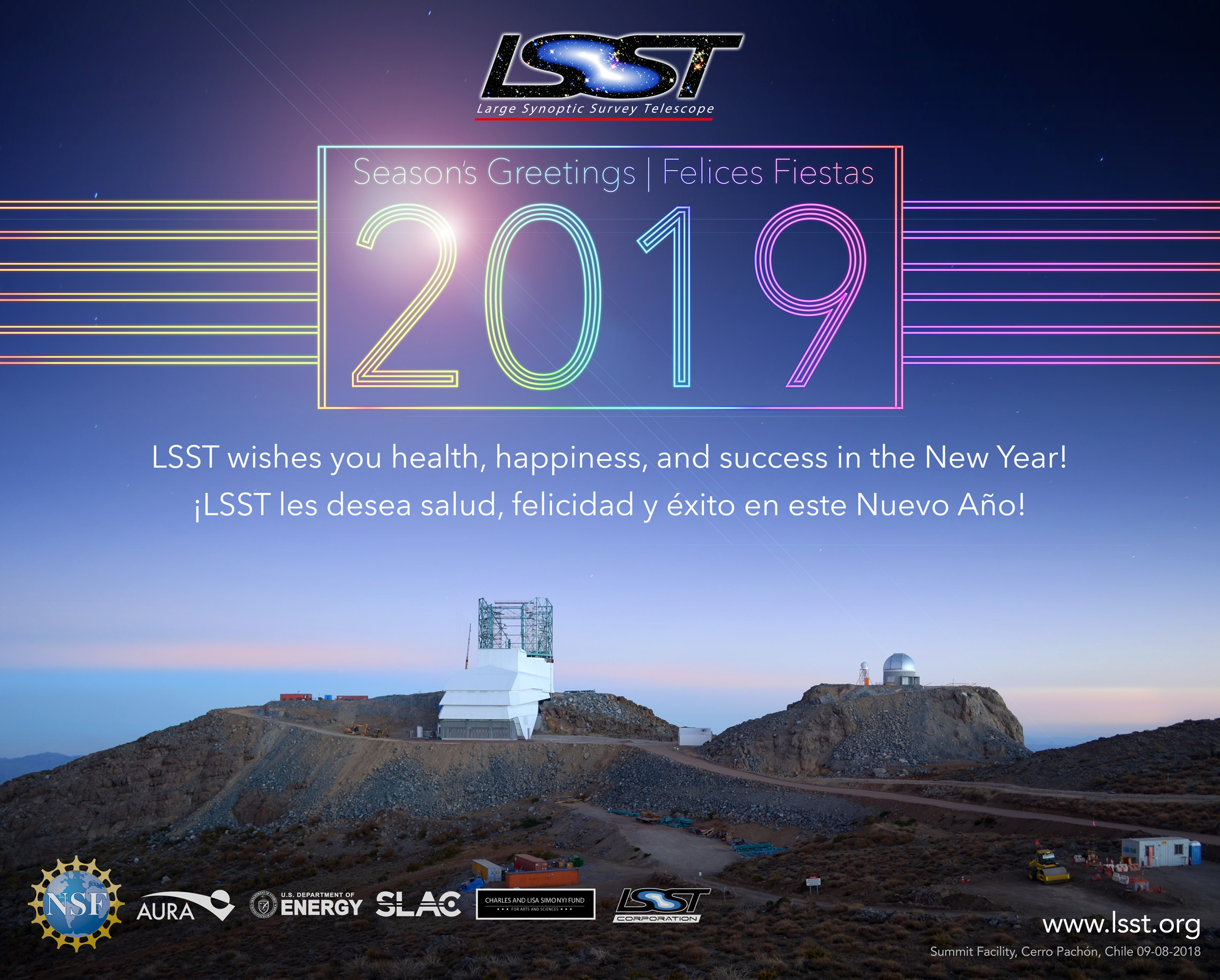
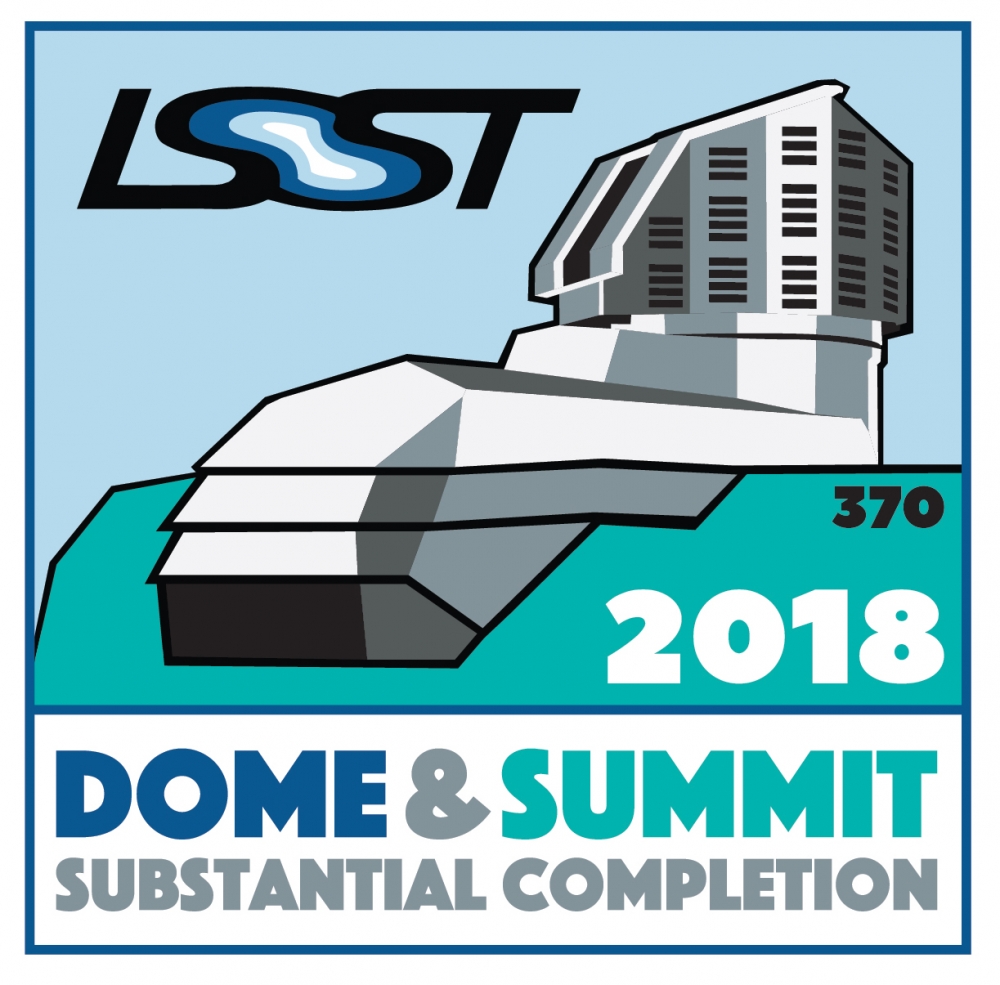
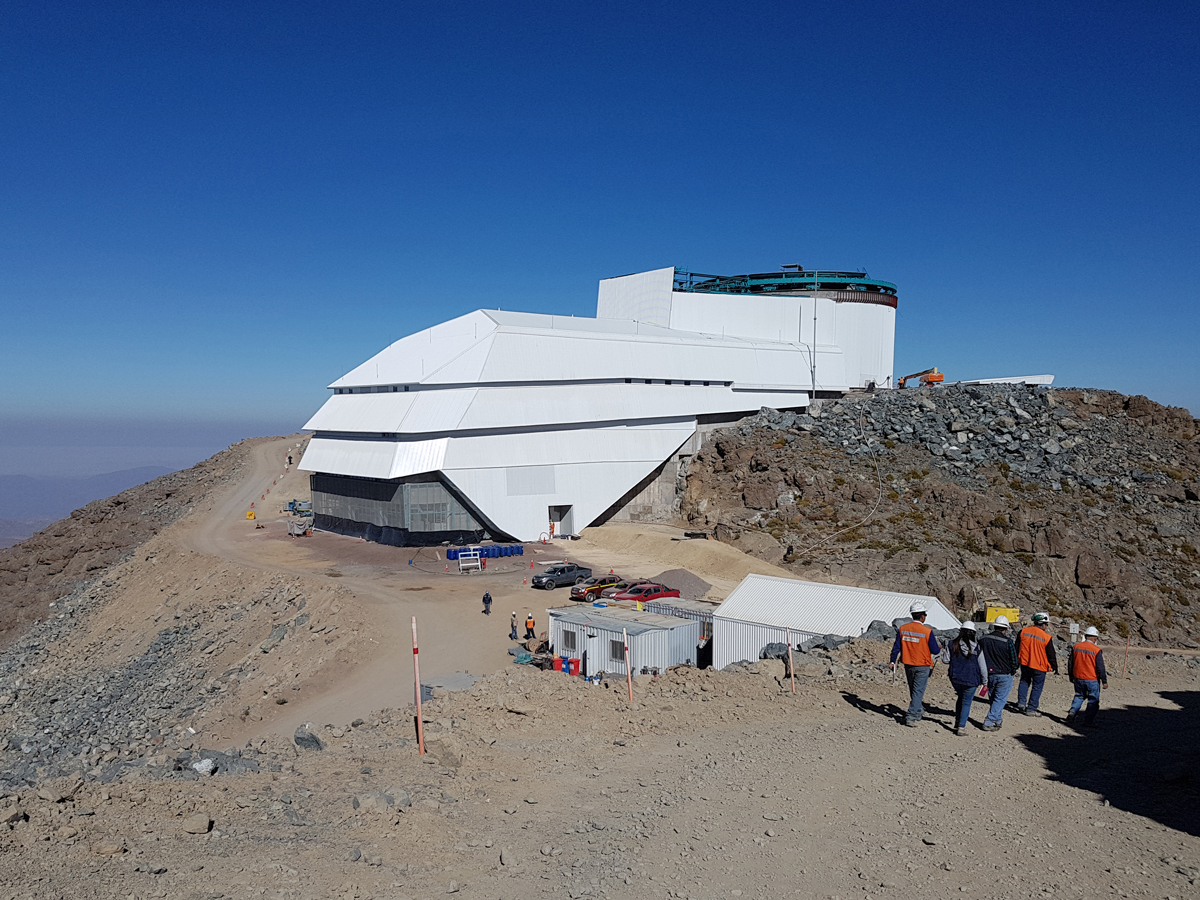 March 2018 - LSST took occupancy of the Cerro Pachón summit facility building
March 2018 - LSST took occupancy of the Cerro Pachón summit facility building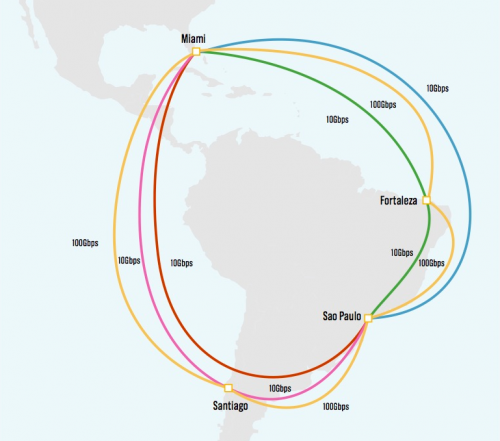
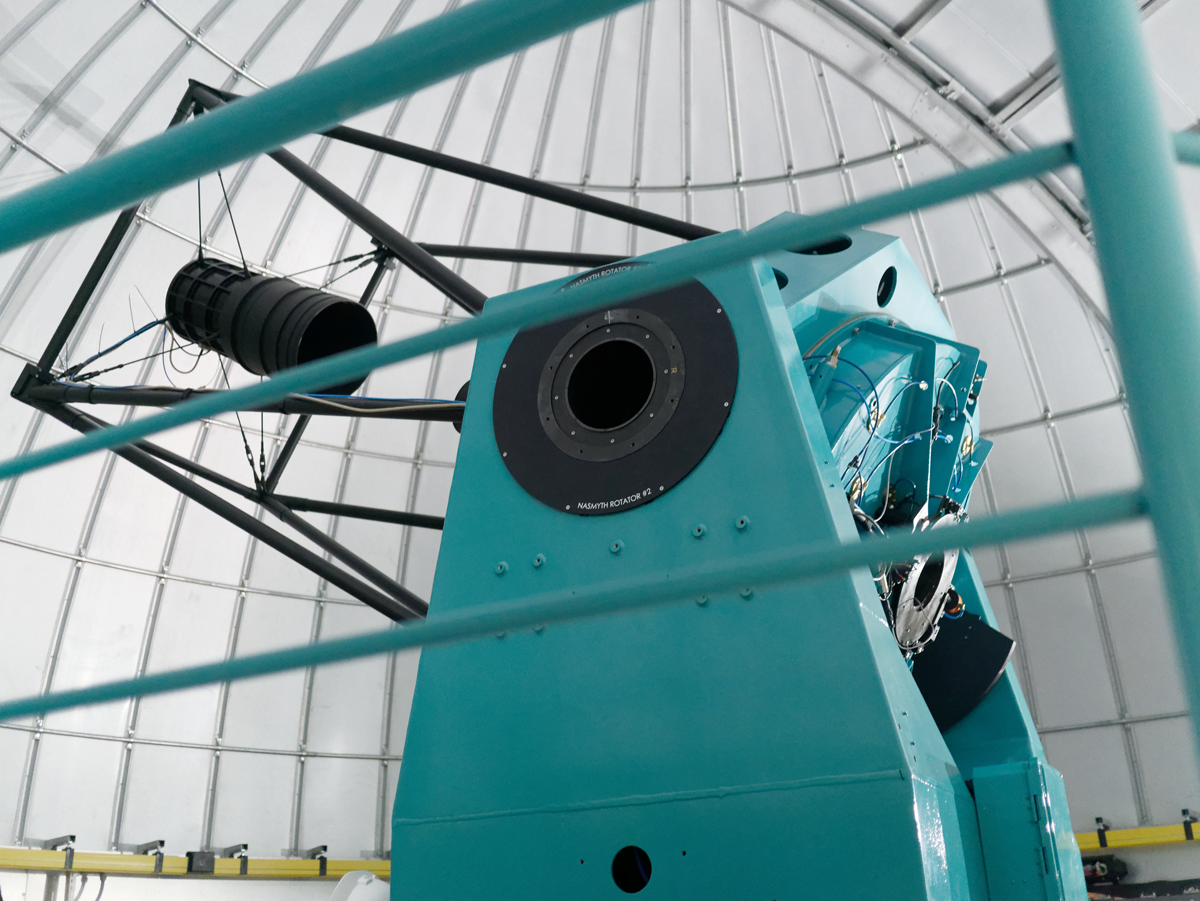
_0.jpg) July, 2018 - The LSST Camera cryostat assembly was completed
July, 2018 - The LSST Camera cryostat assembly was completed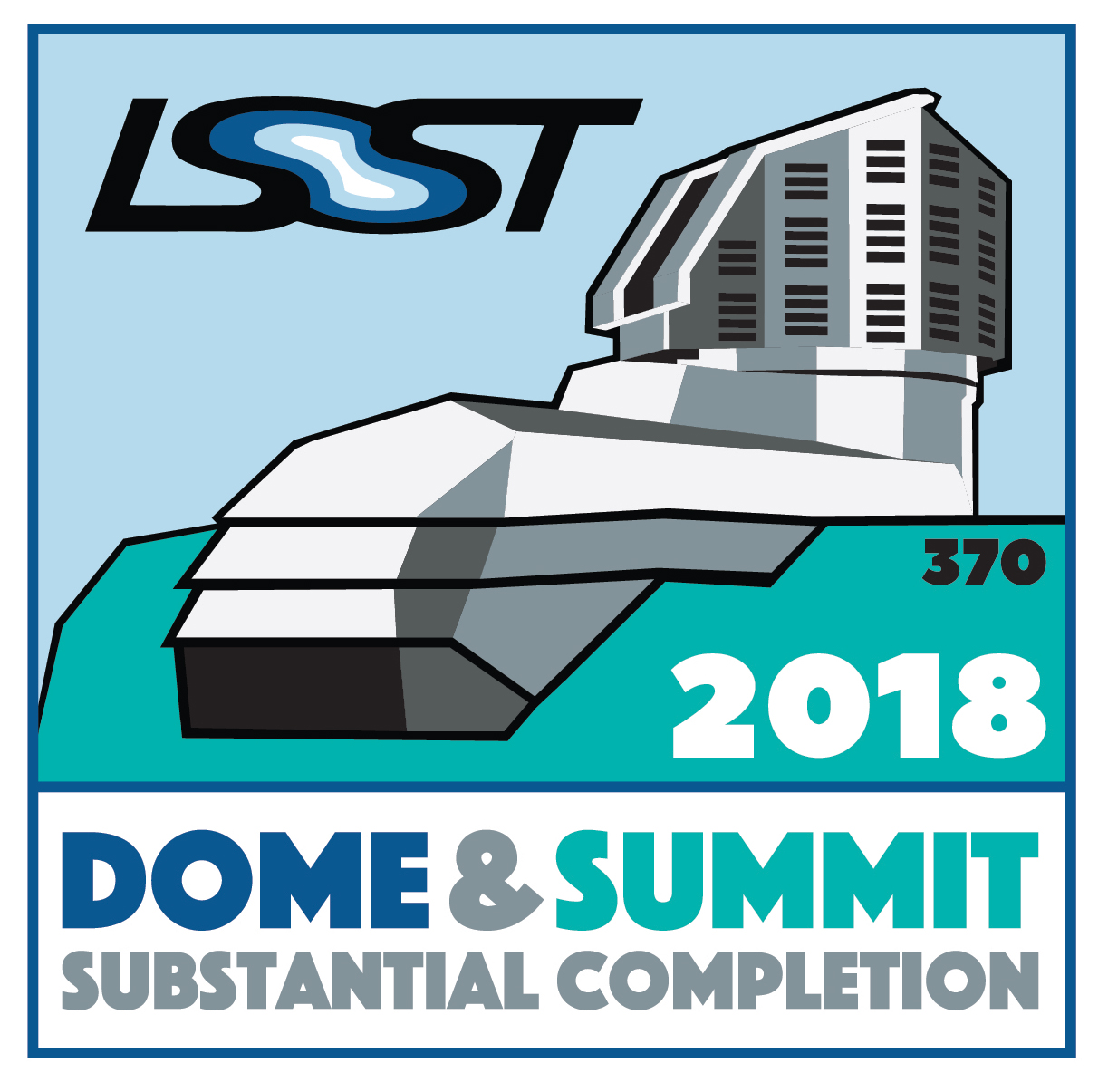
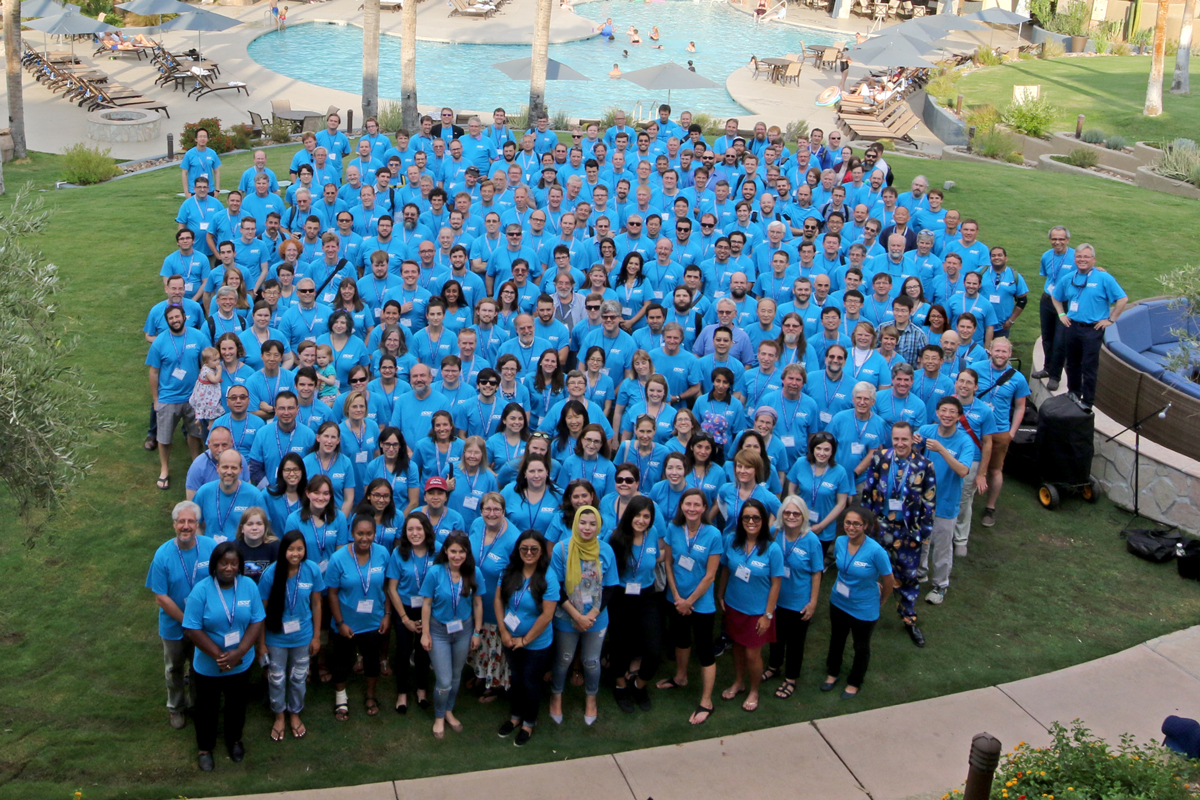
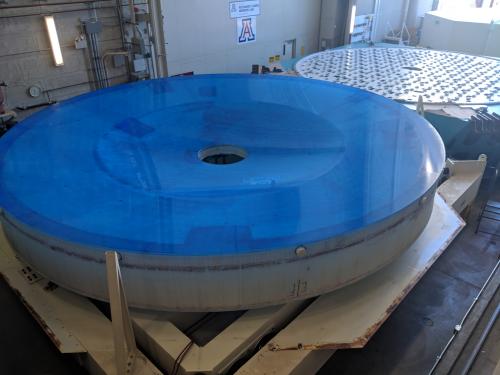 October, 2018 - The LSST Primary/Tertiary Mirror (M1M3) and Cell arrived at the Richard F. Caris Mirror Lab in Tucson
October, 2018 - The LSST Primary/Tertiary Mirror (M1M3) and Cell arrived at the Richard F. Caris Mirror Lab in Tucson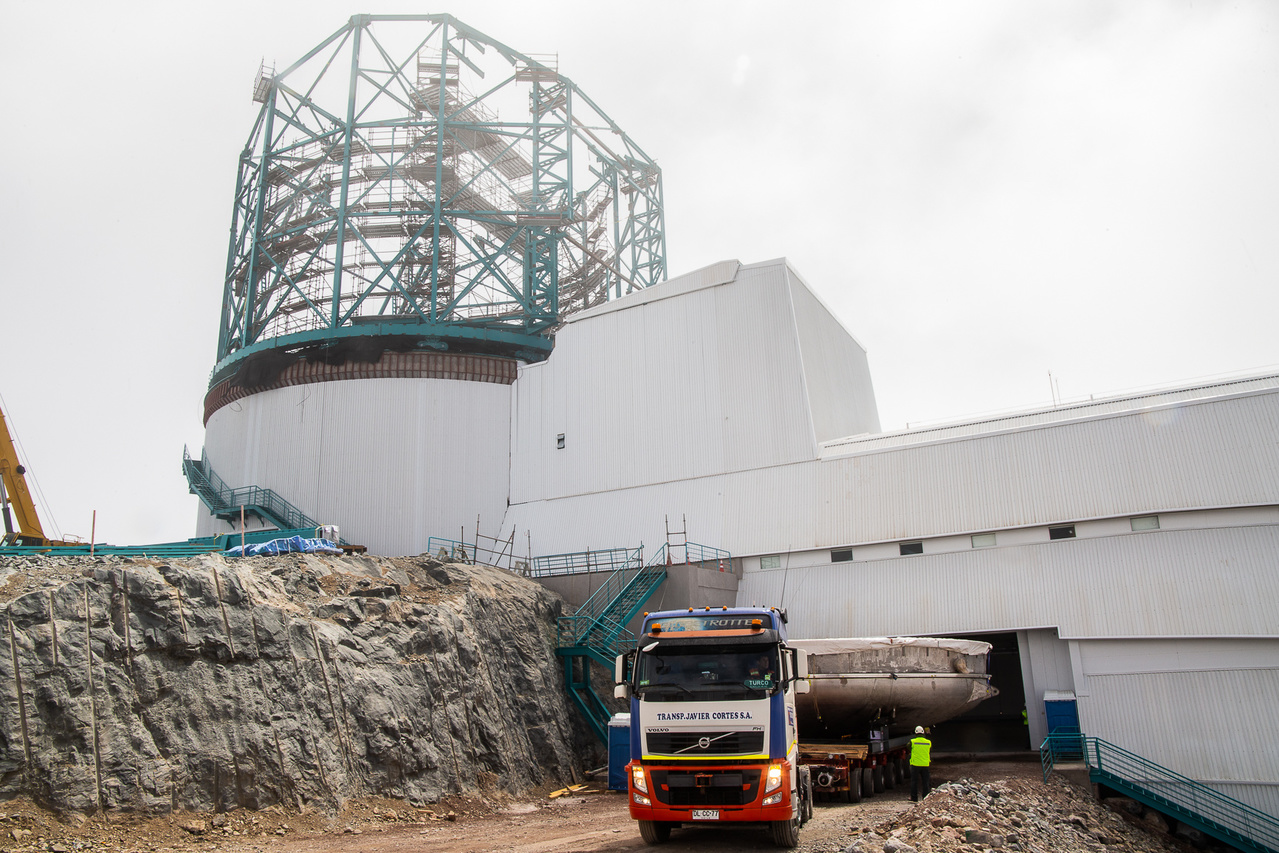 November, 2018 - The LSST Coating Chamber arrived on Cerro Pachón
November, 2018 - The LSST Coating Chamber arrived on Cerro Pachón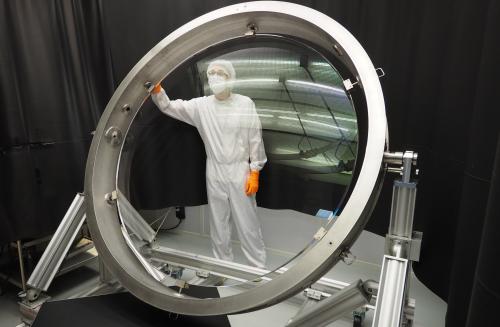 December, 2018 - The L1 lens for the LSST Camera was coated by Safran Reosc in France
December, 2018 - The L1 lens for the LSST Camera was coated by Safran Reosc in France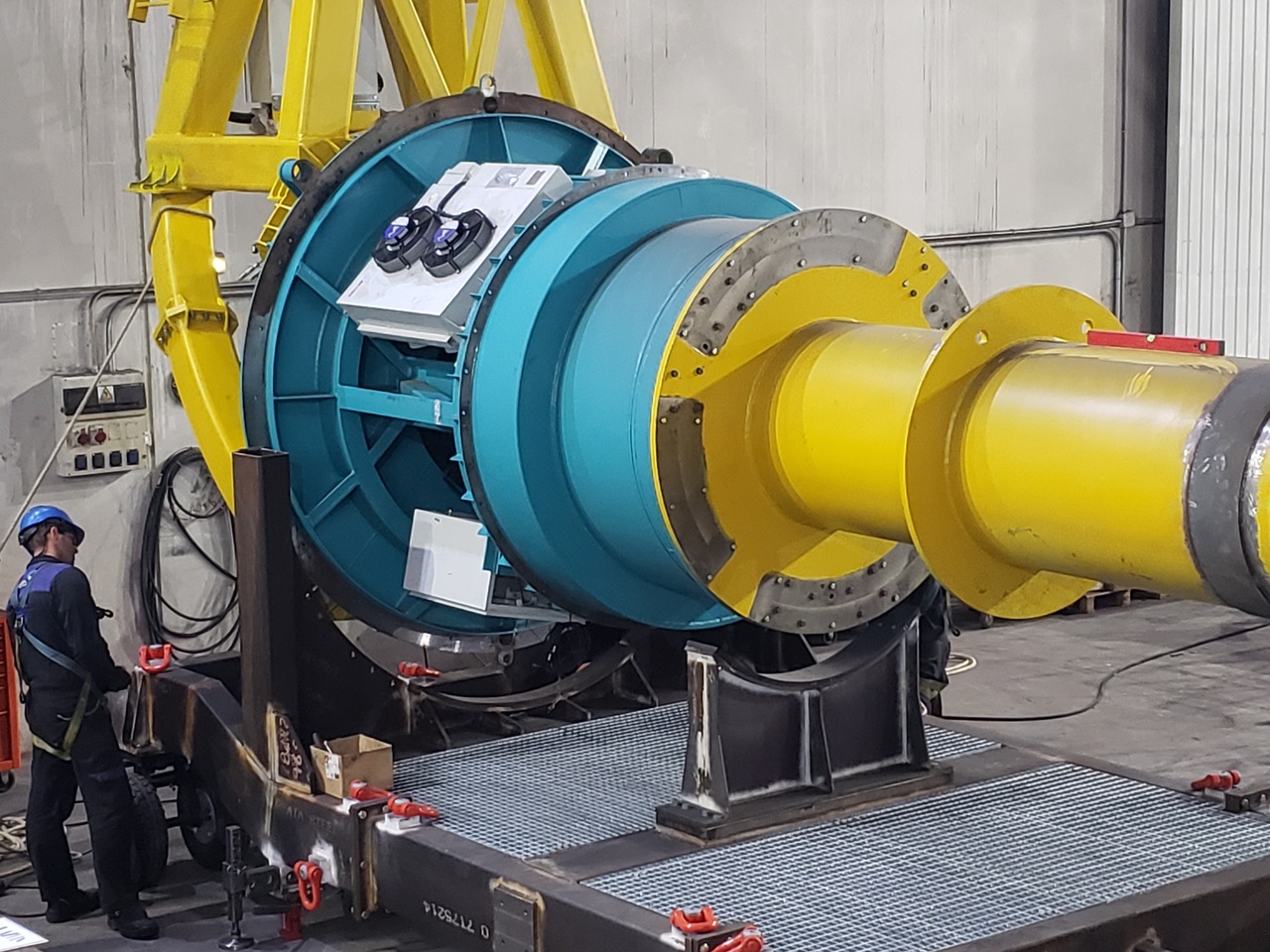 December, 2018 - The Telescope Mount Assembly (TMA) finished Factory Acceptance Testing at Asturfeito in Spain, and is now ready for disassembly and shipping to Chile.
December, 2018 - The Telescope Mount Assembly (TMA) finished Factory Acceptance Testing at Asturfeito in Spain, and is now ready for disassembly and shipping to Chile.